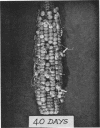Abstract
The effects of two viviparous genes, vp1 and vp5, on development of the maize (Zea mays L.) embryo and endosperm were investigated. Differences between viviparous and normal embryos first appeared at 25 to 30 days after pollination. Increases in fresh weights indicated that viviparous began to grow more rapidly than normal embryos at that time. Amino acids and ethanol-soluble carbohydrates also accumulated more rapidly in viviparous, but a reserve material (lipid) was lower in viviparous than in normal embryos.
The fresh and dry weights and total nitrogen content of endosperms from viviparous resembled those of normal seeds until about 30 days after pollination, but were all lower in viviparous after that time. Pronounced differences in α-amylase activity were not observed until late in development (40 days after pollination) when the enzyme increased in viviparous seeds only. Developmental changes in viviparous seeds generally resemble those of normally germinating seeds.
Full text
PDF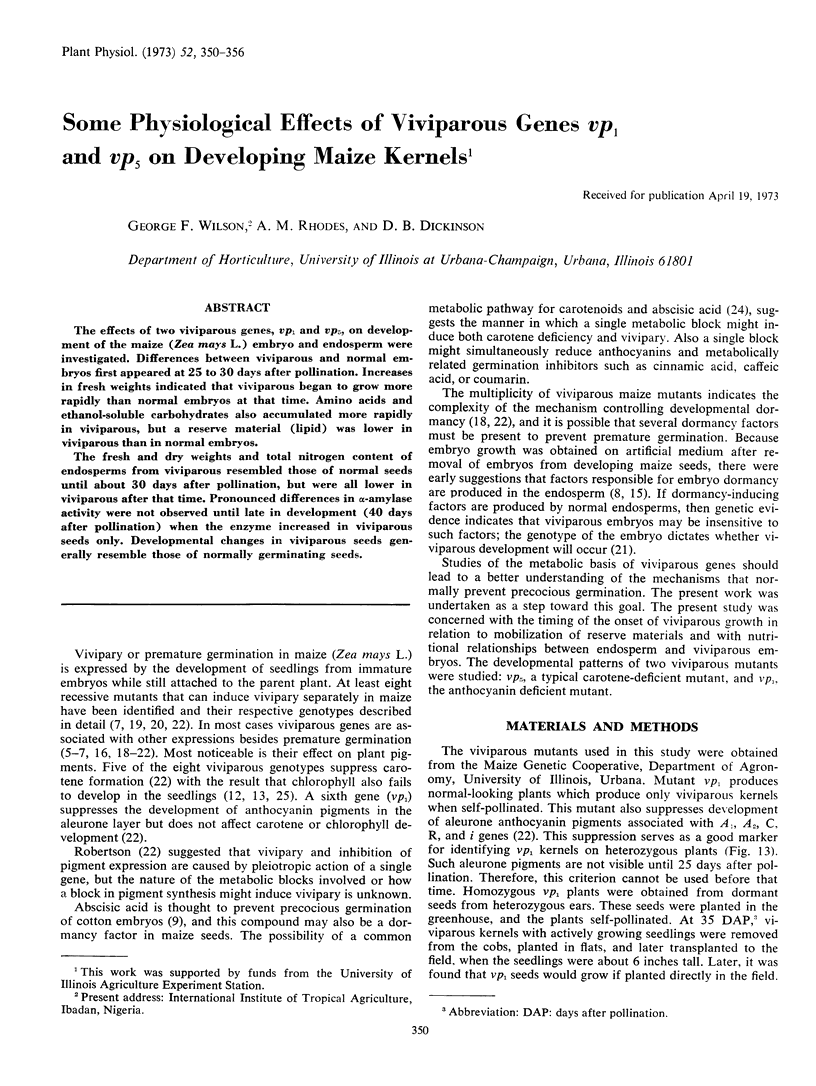
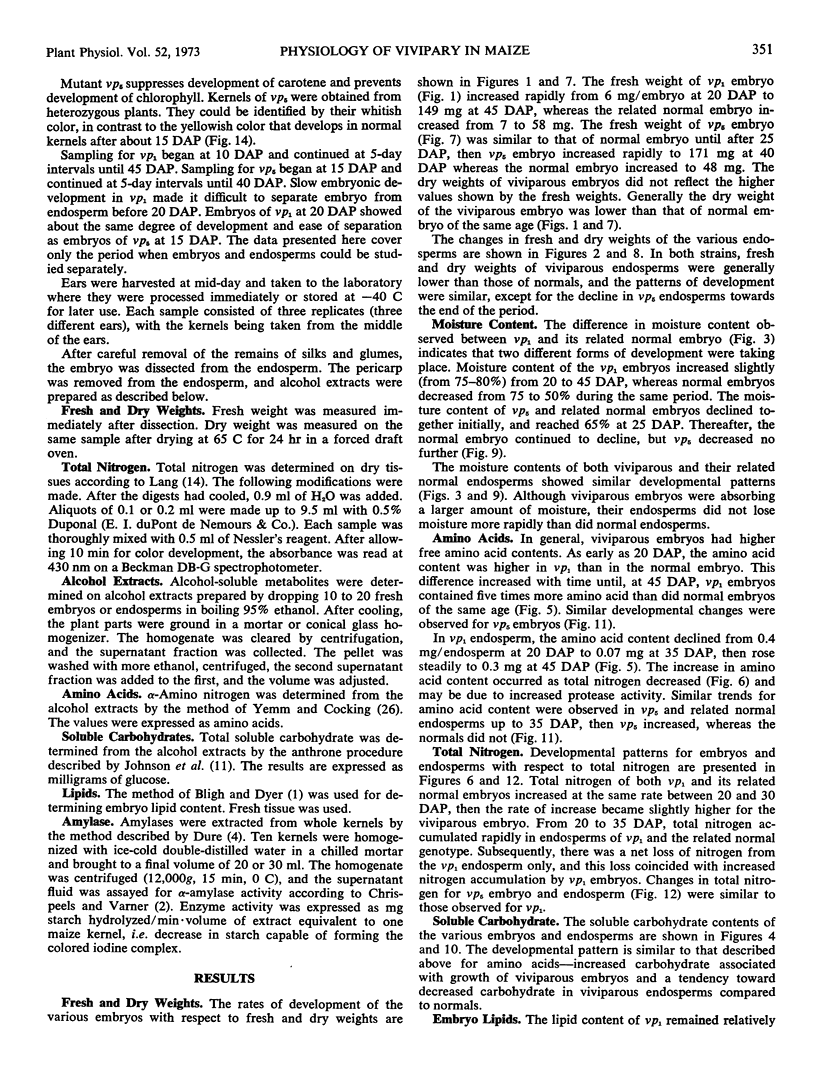
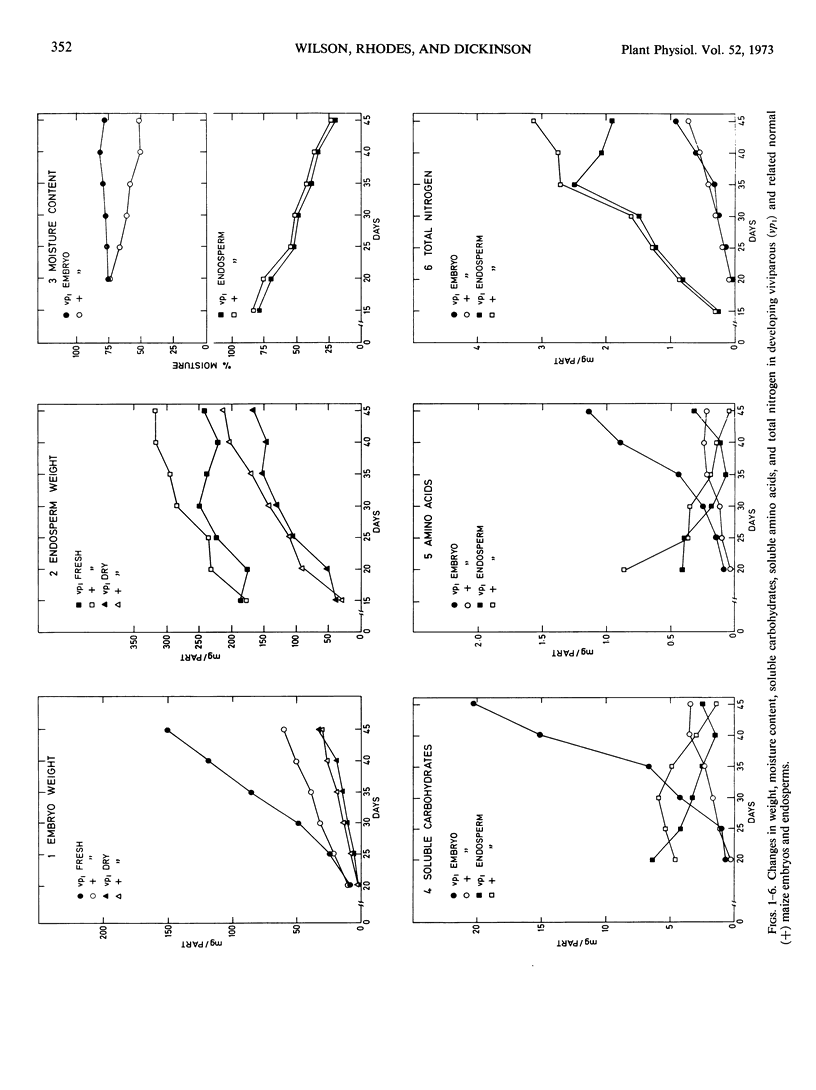
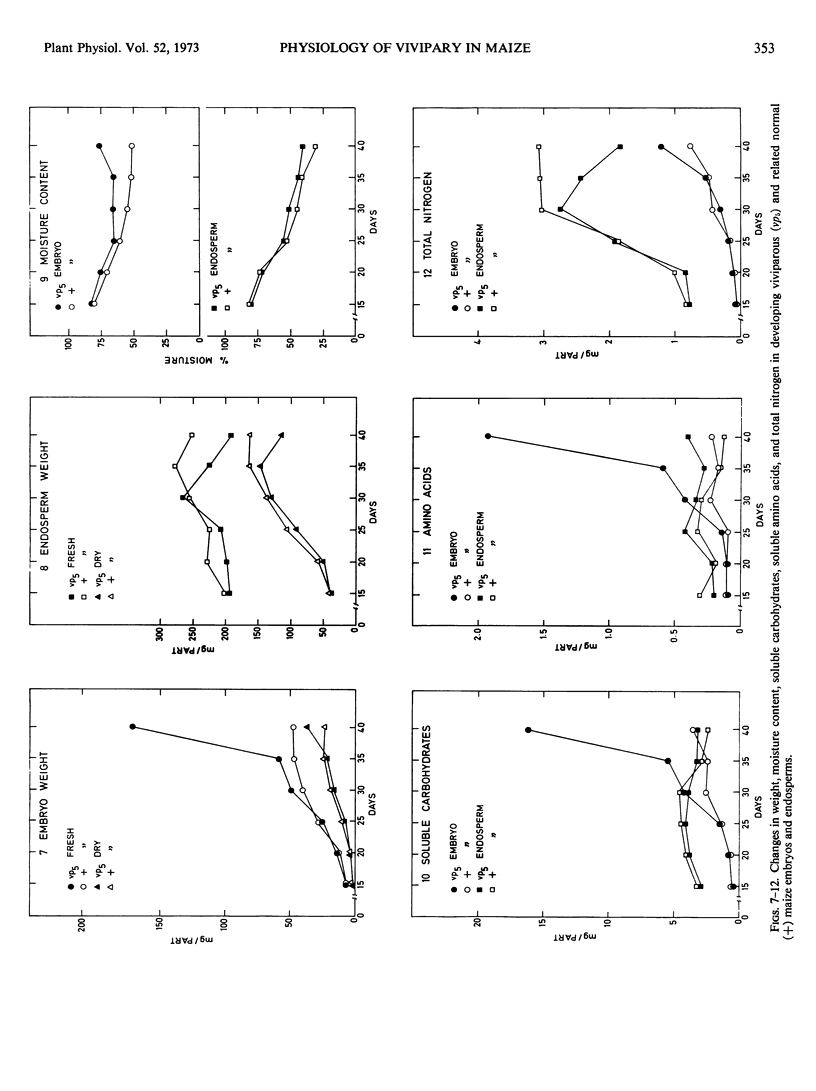
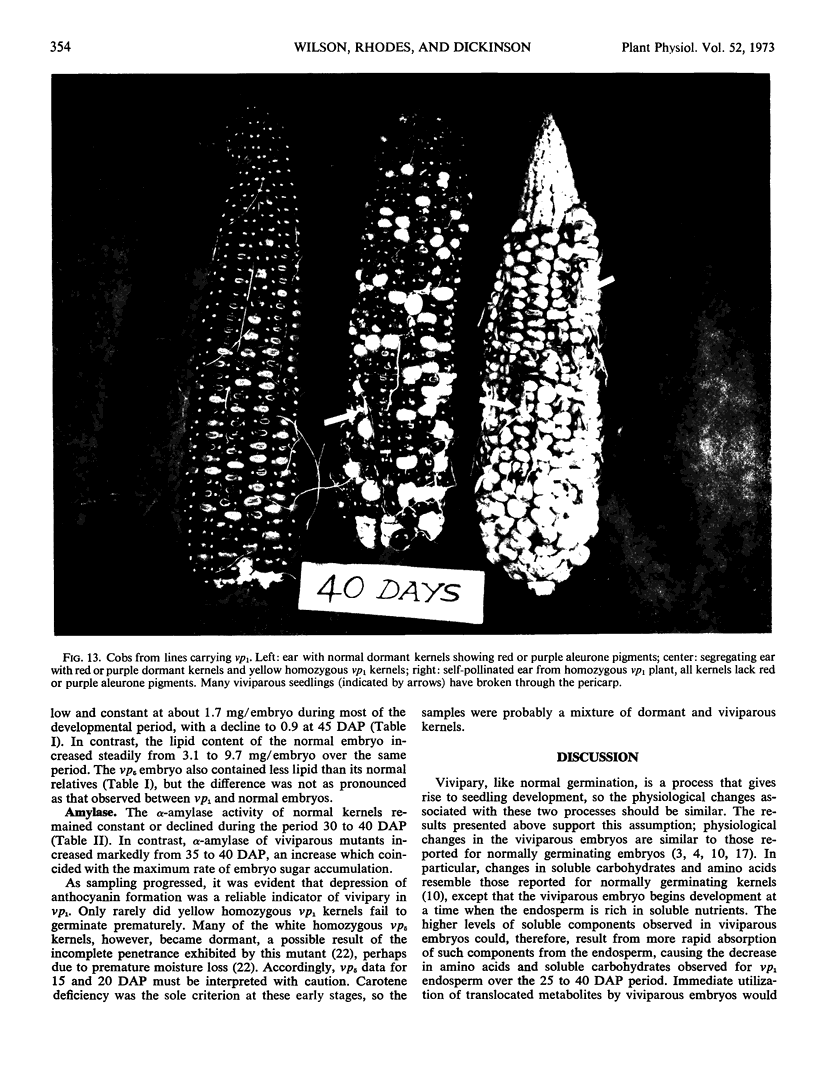
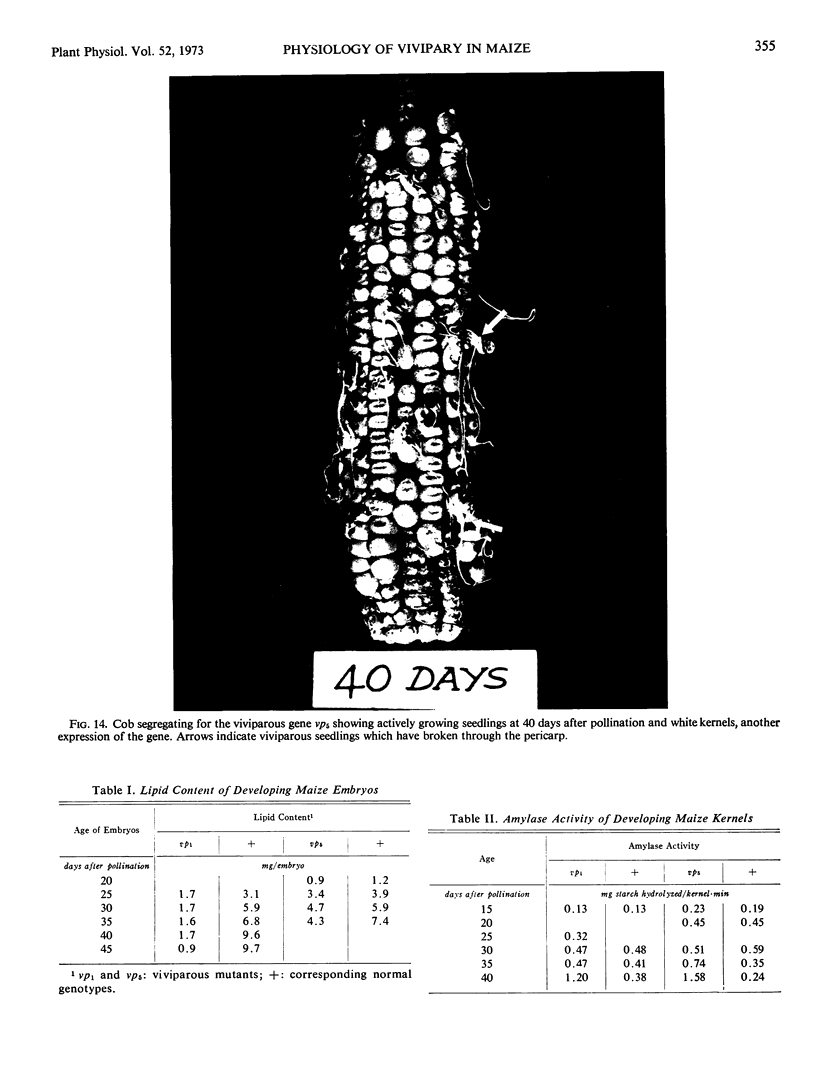
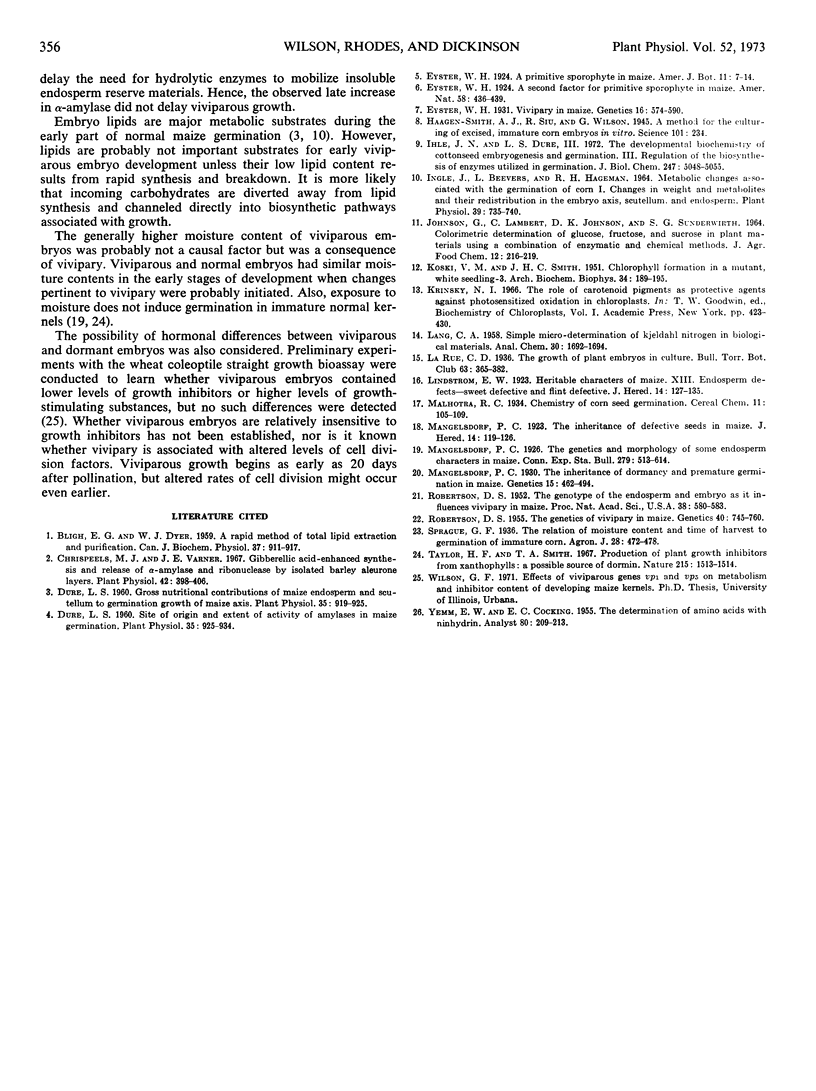
Images in this article
Selected References
These references are in PubMed. This may not be the complete list of references from this article.
- BLIGH E. G., DYER W. J. A rapid method of total lipid extraction and purification. Can J Biochem Physiol. 1959 Aug;37(8):911–917. doi: 10.1139/o59-099. [DOI] [PubMed] [Google Scholar]
- Chrispeels M. J., Varner J. E. Gibberellic Acid-enhanced synthesis and release of alpha-amylase and ribonuclease by isolated barley and aleurone layers. Plant Physiol. 1967 Mar;42(3):398–406. doi: 10.1104/pp.42.3.398. [DOI] [PMC free article] [PubMed] [Google Scholar]
- Dure L. S. Site of Origin and Extent of Activity of Amylases in Maize Germination. Plant Physiol. 1960 Nov;35(6):925–934. doi: 10.1104/pp.35.6.925. [DOI] [PMC free article] [PubMed] [Google Scholar]
- Eyster W H. Vivipary in Maize. Genetics. 1931 Nov;16(6):574–590. doi: 10.1093/genetics/16.6.574. [DOI] [PMC free article] [PubMed] [Google Scholar]
- Haagen-Smit A. J., Siu R., Wilson G. A METHOD FOR THE CULTURING OF EXCISED, IMMATURE CORN EMBRYOS IN VITRO. Science. 1945 Mar 2;101(2618):234–234. doi: 10.1126/science.101.2618.234. [DOI] [PubMed] [Google Scholar]
- Ihle J. N., Dure L. S., 3rd The developmental biochemistry of cottonseed embryogenesis and germination. 3. Regulation of the biosynthesis of enzymes utilized in germination. J Biol Chem. 1972 Aug 25;247(16):5048–5055. [PubMed] [Google Scholar]
- Ingle J., Beevers L., Hageman R. H. Metabolic Changes Associated with the Germination of Corn. I. Changes in Weight and Metabolites and their Redistribution in the Embryo Axis, Scutellum, and Endosperm. Plant Physiol. 1964 Sep;39(5):735–740. doi: 10.1104/pp.39.5.735. [DOI] [PMC free article] [PubMed] [Google Scholar]
- KOSKI V. M., SMITH J. H. C. Chlorophyll formation in a mutant, white seedling-3. Arch Biochem Biophys. 1951 Nov;34(1):189–195. doi: 10.1016/s0003-9861(51)80024-9. [DOI] [PubMed] [Google Scholar]
- Mangelsdorf P C. The Inheritance of Dormancy and Premature Germination in Maize. Genetics. 1930 Sep;15(5):462–494. doi: 10.1093/genetics/15.5.462. [DOI] [PMC free article] [PubMed] [Google Scholar]
- Robertson D. S. The Genetics of Vivipary in Maize. Genetics. 1955 Sep;40(5):745–760. doi: 10.1093/genetics/40.5.745. [DOI] [PMC free article] [PubMed] [Google Scholar]
- Robertson D. S. The Genotype of the Endosperm and Embryo as it Influences Vivipary in Maize. Proc Natl Acad Sci U S A. 1952 Jul;38(7):580–583. doi: 10.1073/pnas.38.7.580. [DOI] [PMC free article] [PubMed] [Google Scholar]
- Taylor H. F., Smith T. A. Production of plant growth inhibitors from xanthophylls: a possible source of dormin. Nature. 1967 Sep 30;215(5109):1513–1514. doi: 10.1038/2151513a0. [DOI] [PubMed] [Google Scholar]




